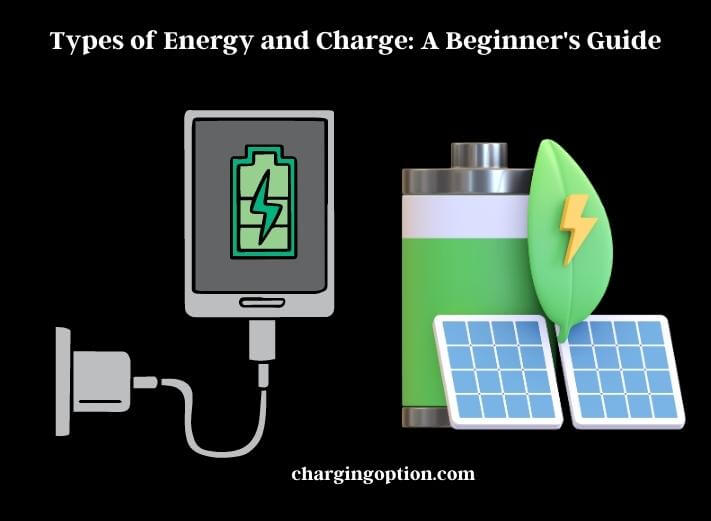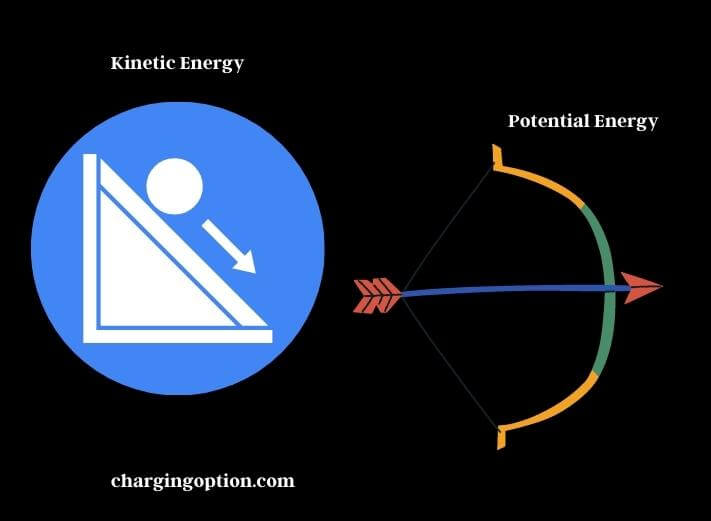Energy and charge are two fundamental concepts that are essential to understanding the physical world around us. From the movement of electrons in a wire to the forces that bind atoms together, energy and charge play a crucial role in shaping the world we live in. By exploring the different types of energy and charge, as well as their characteristics and applications, we can gain a deeper understanding of the physical processes that govern the world we inhabit.

Energy is the ability to do work, and it can exist in many different forms, including kinetic, potential, thermal, chemical, and nuclear energy. Each form of energy has unique characteristics and applications, and by understanding these different types, we can better appreciate the diverse ways in which energy shapes our world.
Charge, on the other hand, is a fundamental property of matter that determines how it interacts with other matter through electric and magnetic fields. There are three types of charge: positive, negative, and neutral, and each type of charge plays a crucial role in the behavior of matter at both the macroscopic and microscopic levels.
Types of Energy
Energy is a fundamental concept in physics, and it can exist in many different forms. Each type of energy has unique characteristics and applications, and by understanding these different forms, we can better appreciate the diverse ways in which energy shapes our world.
Kinetic Energy
Kinetic energy is the energy of motion. Any object that is in motion has kinetic energy, which is dependent on its mass and velocity. For example, a moving car has kinetic energy due to its speed and mass.

Potential Energy
Potential energy is the energy that an object possesses due to its position or state. There are different types of potential energy, such as gravitational potential energy, elastic potential energy, and electric potential energy. For example, a book sitting on a shelf has gravitational potential energy due to its position relative to the ground.
Thermal Energy
Thermal energy is the energy that comes from the movement of particles in a substance. The hotter a substance is, the more thermal energy it has. This type of energy is important in many applications, such as cooking and heating homes.
Chemical Energy
Chemical energy is the energy stored in the bonds between atoms and molecules. When chemical reactions occur, this energy can be released or absorbed. For example, the combustion of gasoline in an engine releases chemical energy, which is used to power the car.
Nuclear Energy
Nuclear energy is the energy stored in the nucleus of an atom. This energy can be released through nuclear reactions, such as fission or fusion. Nuclear energy is used in power plants to generate electricity.
Types of Charge
The charge is a fundamental property of matter that determines how it interacts with other matter through electric and magnetic fields. There are three types of charge: positive, negative, and neutral, and each type of charge plays a crucial role in the behavior of matter at both the macroscopic and microscopic levels.
Positive Charge
The positive charge is a type of charge that is associated with protons, which are positively charged particles found in the nucleus of an atom. When two positively charged objects are brought close together, they will repel each other due to their like charges.
Negative Charge
The negative charge is a type of charge that is associated with electrons, which are negatively charged particles found orbiting the nucleus of an atom. When two negatively charged objects are brought close together, they will repel each other due to their like charges.
Neutral Charge
A neutral charge is a type of charge that occurs when the number of positive and negative charges are equal. This occurs in atoms when the number of protons in the nucleus is equal to the number of electrons orbiting the nucleus.
The charge is important in many aspects of our daily lives. For example, the behavior of electrons in wires is the basis for the generation and transmission of electricity. The behavior of charge is also important in fields such as electronics, telecommunications, and medicine.
Characteristics of Energy and Charge
Energy and charge are fundamental concepts in physics, and they each possess unique characteristics that help to define their behavior and interactions with the world around them.
Conservation
One of the key characteristics of energy is that it is conserved. This means that energy can neither be created nor destroyed, but only transformed from one form to another. This principle is known as the law of conservation of energy.
Transferability
Energy can be transferred from one object to another through various mechanisms, such as heat transfer or work. For example, when a person lifts a heavy object, the energy expended is transferred to the object in the form of potential energy.
Units
Energy is measured in joules (J) or other units, depending on the type of energy being measured. For example, thermal energy may be measured in calories or British Thermal Units (BTUs), while electrical energy is measured in kilowatt-hours (kWh).
Interaction
Charge interacts with other charges through electric and magnetic fields. Like charges repel each other, while opposite charges attract. This interaction is described by Coulomb’s law, which states that the force between two charged particles is directly proportional to the product of their charges and inversely proportional to the square of the distance between them.
Quantization
The charge is quantized, meaning that it occurs in discrete packets or units. The fundamental unit of charge is the elementary charge, which is the charge of a single proton or electron.
Conservation
The charge is also conserved, meaning that the total amount of charge in a closed system remains constant. This principle is known as the law of conservation of charge.
These concepts are crucial for understanding the behavior of matter and energy at both the macroscopic and microscopic levels.
Applications of Energy and Charge
Energy and charge are fundamental concepts that have numerous applications in our daily lives. Here are a few examples of how energy and charge are used in various fields:
Electrical Power
Electrical power generation is one of the most important applications of energy and charge. Power plants generate electricity by converting various forms of energy, such as thermal energy or kinetic energy, into electrical energy. This electrical energy is then transmitted through power grids to homes and businesses for various uses, such as lighting, heating, and powering appliances.
Electronics
Electronics is another field where energy and charge play a significant role. Electronic devices, such as smartphones, laptops, and televisions, use electrical energy to operate. These devices also rely on the charge to function, as the charge is used to create electric fields that control the flow of electrons through circuits. However, many of us may not understand the science behind this process.
Medicine
Energy and charge are also used in various medical applications. For example, X-rays use high-energy photons to create images of the body, while MRI machines use magnetic fields to generate images of internal structures. Electrical stimulation is also used in some medical treatments, such as deep brain stimulation for Parkinson’s disease.
Renewable Energy
Renewable energy sources, such as solar and wind power, rely on the conversion of energy from one form to another to generate electricity. Solar panels convert light energy into electrical energy, while wind turbines convert kinetic energy into electrical energy. These technologies are becoming increasingly important as society looks for ways to reduce its dependence on fossil fuels.
Space Exploration
Energy and charge are also important in space exploration. Spacecraft use solar panels to generate electricity and rely on electric fields to control their movement. The charge is also important in understanding the behavior of particles in space, such as those in the Van Allen radiation belts.
These are just a few examples of the many applications of energy and charge. As we continue to develop new technologies and expand our understanding of the physical world, the importance of these concepts is likely to continue growing.
Why Types of Energy and Charge are Important
Types of energy and charge are important because they are fundamental concepts in physics that help us understand the behavior of the world around us.

Energy is the ability of a system to do work. There are many different types of energy, including kinetic energy (energy of motion), potential energy (energy stored in an object due to its position or configuration), thermal energy (energy associated with the temperature of an object), electromagnetic energy (energy associated with electromagnetic radiation), and many more.
These different types of energy helps us to analyze and explain physical phenomena such as the motion of objects, the behavior of waves, and the properties of matter.
The charge is a property of matter that describes the presence of an electric field around an object. Electric charge comes in two types, positive and negative, and objects with the same charge repel each other while objects with opposite charges attract each other.
The study of electric charge and its behavior is crucial for understanding the behavior of electricity and magnetism, which are fundamental forces of nature that are responsible for many important physical phenomena such as electric currents, magnetic fields, and electromagnetic radiation.
Conclusion
Energy and charge are fundamental concepts in physics that have many applications in our daily lives. The characteristics and behavior of energy and charge is crucial for developing new technologies, improving our understanding of the physical world, and addressing global challenges, such as climate change and energy sustainability.
Energy exists in various forms, such as kinetic energy, potential energy, thermal energy, and electrical energy. Charge, on the other hand, is a property of particles that interact with electric and magnetic fields. Both energy and charge are conserved, meaning that they can neither be created nor destroyed, only transformed.
The applications of energy and charge are diverse and include electrical power generation, electronics, medicine, renewable energy, and space exploration. As we continue to develop new technologies and explore the physical world, the importance of energy and charge will continue to grow.
If you want to know Can I Charge a 48V Battery With a 24V Charger? Click here to know the answer.
